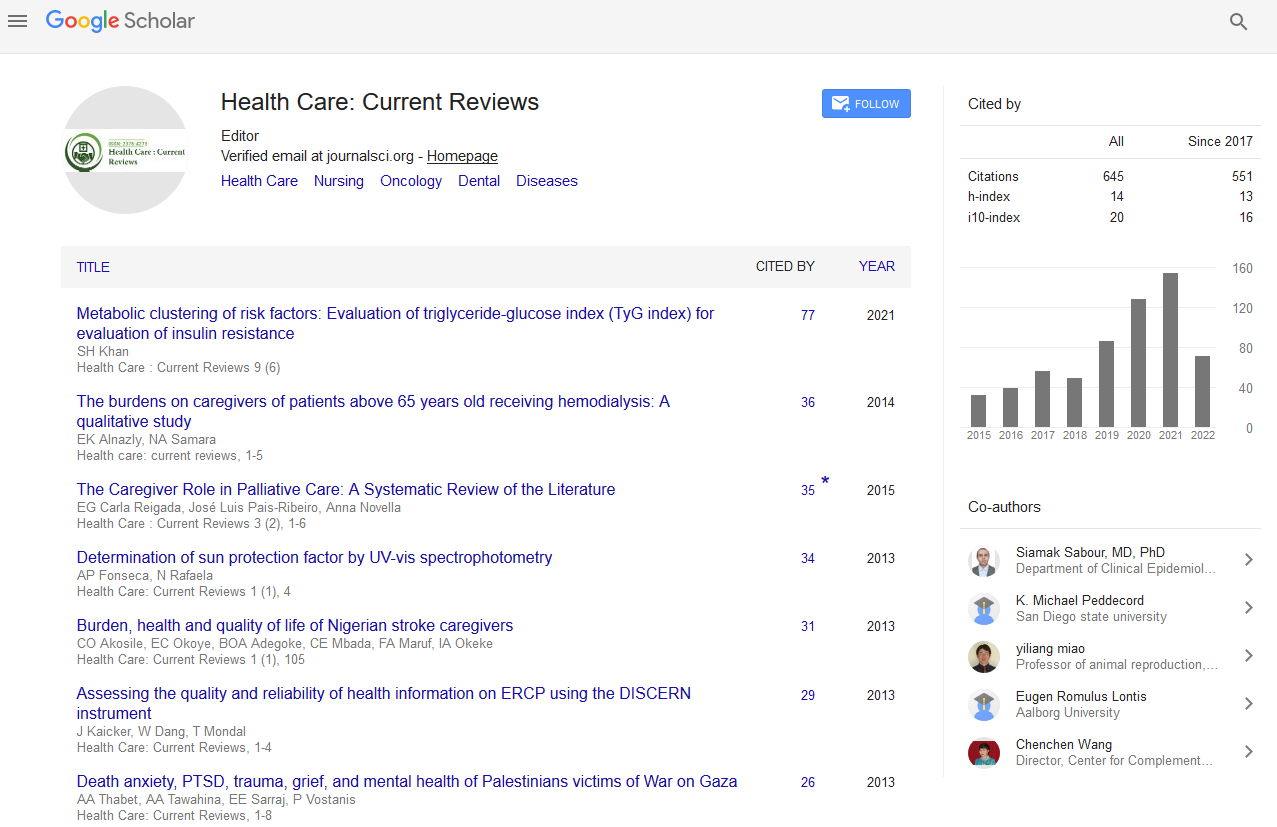PMC/PubMed Indexed Articles
Indexed In
- Open J Gate
- Academic Keys
- RefSeek
- Hamdard University
- EBSCO A-Z
- Publons
- Geneva Foundation for Medical Education and Research
- Google Scholar
Useful Links
Share This Page
Journal Flyer

Open Access Journals
- Agri and Aquaculture
- Biochemistry
- Bioinformatics & Systems Biology
- Business & Management
- Chemistry
- Clinical Sciences
- Engineering
- Food & Nutrition
- General Science
- Genetics & Molecular Biology
- Immunology & Microbiology
- Medical Sciences
- Neuroscience & Psychology
- Nursing & Health Care
- Pharmaceutical Sciences
Abstract
Assessment Of Selection Criteria For Anterior Cruciate Ligament Reconstruction
Szmigielska A and Paradowski PT
Abstract Aim: To assess the need and advisability of anterior cruciate ligament reconstruction (ACLR). Methods: We assessed 85 subjects with a mean age of 28 years (SD 10, range 15-57) who had been assigned to ACLR at the Regional Orthopedic Center in Lodz, Poland. All subjects completed a questionnaire covering sport activity, injury mechanism, experience of knee stability, a way they were assigned for ACLR and expectations of surgery. Preoperative assessment of the knee was made with the Knee injury and Osteoarthritis Outcome Score (KOOS). Satisfactory preoperative clinical knee outcome was defined as the lower threshold for the 95% CI of 18–34-yearold males and corresponded to the KOOS score above 90 for Pain, 84 for Symptoms, 91 for ADL, 80 for Sports/ Recreation, and 81 for QOL. The activity level was determined with the Tegner activity scale. We considered subjects to be eligible for the operation if they fulfilled the newly established criteria: 1) pre-injury activity level ≥ 7 according to Tegner, depending on sport discipline performed, and a will to return to professional sport activity following ACLR and/ or 2) residual knee instability regardless of six-weeks structured exercise program and 3) pre-injury activity level ≥ 4 according to Tegner and/or knee instability regardless of structured exercise program in adolescents. Results: New criteria for ACLR were fulfilled by 44% of the study group. Part of the subjects had satisfactory preoperative clinical knee outcome in the KOOS subscales for Pain, Symptoms and ADL. Subjects scored significantly higher in the KOOS subscales Pain, and KOOS ADL (mean 73 and 79 points respectively) than in the KOOS subscales Sports/Recreation and Quality of Life (mean 47 and 38 points, respectively (P ≤ 0.001). Conclusions: Our findings indicate that more than a half of subjects who are eligible for ACLR according to our inclusion’s criteria could be operated on in vain. Patient’s education, adequate assessment of clinical symptoms, ability to perform activities of daily living and a proper rehabilitation program could decrease the number of subjects assigned to ACLR.


